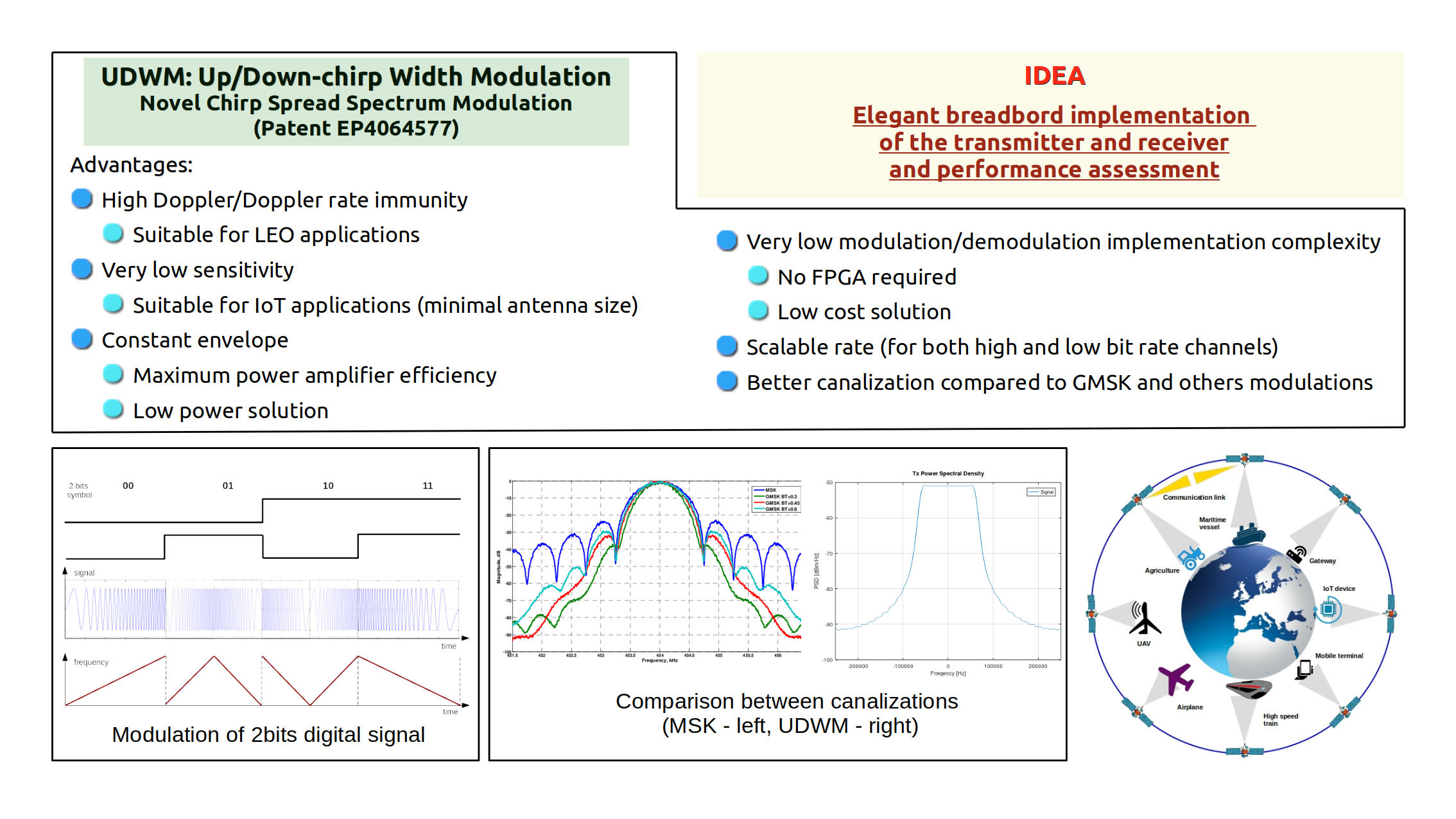Duration: 18 months
The idea aims to open up new development opportunities for low-power and low-cost SATCOM systems, and it is especially applicable to LEO, small satellite networks (i.e. CubeSat), and IoT satellite applications.
One core technology that enables reliable and efficient communication links is signal modulation. Single-carrier (ASK, PSK, FSK, QAM) and multi-carrier (OFDM) are the most commonly used ones in satellite environments.
With the increasing development of LEO satellite industry, other solutions have been proposed. In particular, one emerging and very interesting modulation technique is the Chirp Spread Spectrum (CSS) which has been assessed and tested in the last couple of years.
That modulation is mainly used in ground IoT networks (e.g. LoRa) because of its long-range capability and low implementation cost.
The authors of this idea patented a novel CSS modulation technique, named UDWM (Up/Down-chirp Width Modulation), with the aim to implement it and make it available for satellite applications.
UDWM was modeled using a mathematical simulator and the results of the simulations bring out several features that a satellite communication system can exploit.
A list of the main UDWM advantages follows: 1. high Doppler/Doppler rate immunity (it is suitable for LEO applications), 2. very low sensitivity (that leads to small antenna size requirement), 3. constant envelope (that leads to maximum power amplifier efficiency and low power consumption), 4. very low modulation/demodulation complexity (no FPGA is required - low-cost implementation), 5. better canalization compared to GMSK and other modulations (simpler RF front-end).
The above technical properties list makes UDWM a very promising new technology that addresses the “User terminal technologies” challenges of the Competence Domain CD5.
Indeed, among others, it enables “lowering cost, increasing compactness”.
Moreover, the idea really beneficial to the TLC section of the payload as well.

